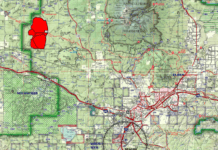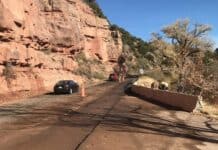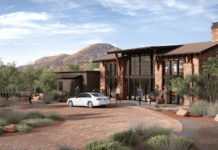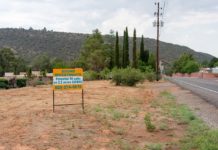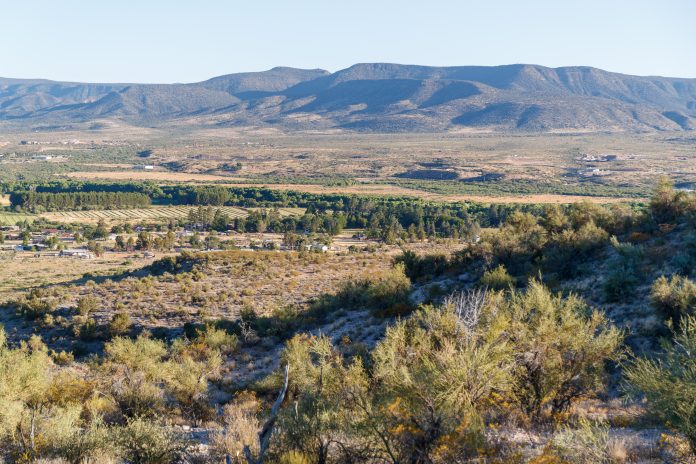
The project aiming to build a road connecting State Route 260 with Cornville Road, dubbed Verde Connect, overcame another hurdle this week, as the Final Environmental Assessment, a necessary part of the process required for the project to begin work, was completed.
The final assessment comes after a draft version of the assessment was released on April 23 and opened for public comment through May 25.
The final assessment featured few substantive changes compared to the draft assessment. It did, however, include new language calling for the project to “coordinate with Arizona Game and Fish Department about accommodating wildlife during final design,” as well as undergo other provisions to protect wildlife and vegetation in the area. The assessment additionally has new language requiring contractors to “allow scheduled and emergency access to the OK Ditch during construction as needed for operation, maintenance and repairs.”
In addition to the Final Environmental Assessment, the Federal Highway Administration, which approved a grant for $25 million for the construction of a bridge across the Verde River as part of the project, released a “Finding of No Significant Impact” conclusion based on the assessment, also known as a FONSI.
“The beneficial impacts will mostly accrue to users of the local and regional transportation network, including improved emergency response time and alternative evacuation route, because of the additional linkage and capacity provided by the new road,” the FHWA document states. “The adverse impacts will mostly accrue to the natural and cultural resources that will be disturbed by the construction and lasting presence of the road. However, measures to mitigate these impacts as much as possible are included as part of the action, and providing a safe all-weather alternative to the low water crossing of the Verde River will benefit that resource over the long term. Overall the adverse impacts of these resources are expected to be discrete and insubstantial taken in context.”
Zach Wolfe, a resident of the Middle Verde area that the proposed road would cross near and a leader of Verde Disconnect, a group of residents opposed to the road, disagrees with the assessment that it would have minimal impact.
“Comments made by both District 3 Supervisor Randy Garrison and FHWA representative Karla Petty proved that the public scoping process was nothing more than a charade made to look like they were fulfilling the legal obligations of the project,” Wolfe wrote in an email. However, Wolfe provided no evidence.
“It is clear that an agreement was already in place to push the project forward regardless of impact. It’s shameful,” He wrote.
Garrison, who has been a long-time advocate of the Verde Connect project, hailed the assessment and expressed excitement for the future of the project.
“We have reached the finish line, thanks to the broad public and community support for this project,” Garrison wrote in an email. “The board will be approving the next fiscal budget this Monday morning [Aug. 3], which includes a place holder for the federal funding as well as the county estimated portion of Phase 1. The board will approve moving forward with a design and build architect in the near future, at which point we will finally be on our way after more than 20 years of studies.”
“The county is currently in the process for procuring a design-build team to finish the design of the roadway and then construction will proceed with the design,” Yavapai County Public Works Director Dan Cherry wrote in an email. “The project team is currently reviewing the submittals for the request for qualification that was advertised in July 2020, and a request for proposal will be issued to a short-listed group of responding design-build teams in late August/early September 2020. Proposals are anticipated to be received in late October and a contract with a selected design-build team is anticipated to be approved by the Yavapai County Board of Supervisors in November of 2020. I anticipate construction activities to commence in spring of 2021, though there may be some geotechnical testing done prior to that to help support design efforts.”
Wolfe pledged to continue fighting against the project even as this hurdle for Verde Connect advocates has been overcome.
“I do not feel anything is inevitable at this point,” Wolfe wrote. “We have outstanding candidates running for both supervisor positions in the Verde Valley.”
“Voters in Yavapai County’s other three districts do not support paying for this road either,” he wrote, but provided no evidence. “Yavapai County cannot afford this road, and asking for more spending during our current economic situation is completely irresponsible. I believe people will speak with their votes and elect representatives that will do the right thing for Yavapai County taxpayers for a change. Verde Connect does not solve current or future traffic issues. It is not supported by the communities it is said to help. It is not supported by stakeholders, such as the Coconino National Forest.
“The draft Environmental Assessment intentionally neglected to consider the impact on Middle Verde Road, the historic OK Ditch, the economic impact on the Town of Camp Verde and the four miles of road they will be accountable for, or the safety and well being of the residents of the Middle Verde neighborhood. Our current board of supervisors need to be held accountable for their actions.”





